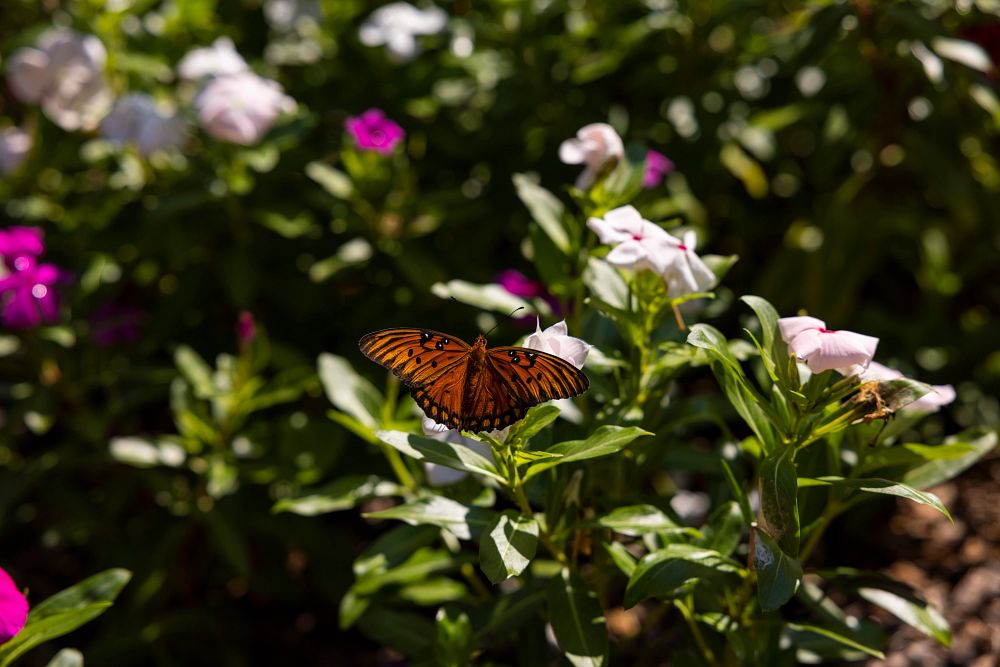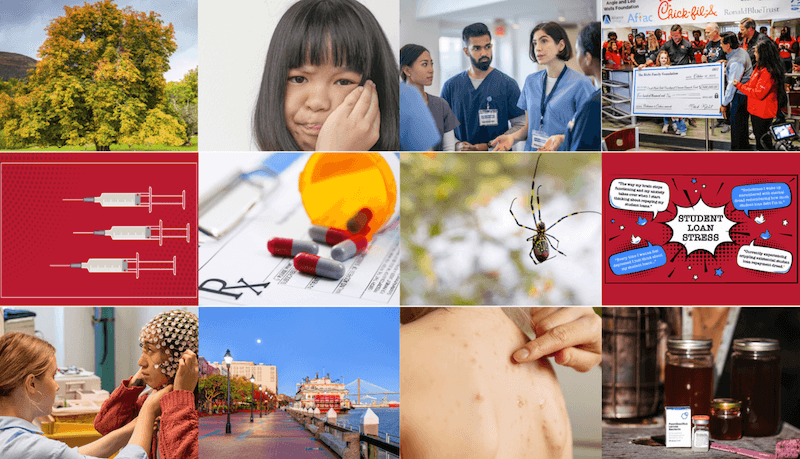News of the startling decline in bee and pollinator populations covers newspapers and gardening magazines, but they often don’t offer much advice on how people can reverse this trend. Stop using pesticides around the home and garden? Install beehives where the swing set used to be?
“It doesn’t have to be that drastic,” said Jennifer Berry, research coordinator and lab manager for the University of Georgia Honey Bee Program.
“There are some very simple changes people can make to encourage and protect beneficial insects, in our cities and suburbs,” Berry said. “Many beneficial insect populations, which include pollinators such as bees and butterflies, have been drastically reduced due to the lack of habitat or killed by pesticide poisoning. Yet we can do so much better with little effort.”
One of the easiest changes and one that will also enhance the beauty of any landscape is to establish more flowering plants, shrubs and trees that are native to Georgia and the Southeast. These plants support pollinators.
Keeping a wide variety of plants in the garden not only provides pollinators with a food source, but also physically protects them during the growing season. Southern magnolias, red buds, zinnias, purple coneflower and sunflowers are just a few that attract pollinators.
Local UGA Extension agents are a great resource and can be extremely helpful in recommending plants that will make superb pollinator habitats for different parts of the state.
The second piece to the pollinator protection puzzle is to use pesticides more carefully. Before grabbing a broad-spectrum pesticide and spraying the entire yard or garden, determine which insect or insects are causing damage. Many insects are beneficial and actually feed on harmful pests. Killing beneficial insects can actually cause pest populations to increase.
A local UGA Extension agent can identify most common pests and recommend a non-chemical method for curtailing damage. However, if a pesticide is the only option, there are several ways to minimize its impact on pollinators.
First, when applying pesticides, timing is essential. Bees, butterflies and other pollinators forage during the day, so applying pesticides that degrade rapidly at night will allow the chemicals to dry and dissipate before a pollinator comes in contact with them. Also, avoid applying pesticides to the flower bloom. This is the primary plant part that pollinators come in contact with as they gather pollen and nectar.
As mentioned above, several classes of pesticides are available that break down quicker than others and won’t be as toxic to pollinators or other beneficial insects. And, they are less harmful to the environment. One pesticide Berry recommends is Bacillus thuringiensis (or Bt), a biological pesticide that works without harming beneficial insects or pollinators.
She warns against using any pesticide that is applied as a dust since dust particles resemble pollen grains. Pollinators, bees in particular, will carry this material back to their nests and feed it to developing young, which is extremely detrimental to their health.
“No matter what type of pesticide is used, gardeners and homeowners should always follow pesticide label instructions. Plus, using more of a pesticide or using it more often than recommended, won’t necessarily get rid of the pests, but instead may cause more serious issues down the road,” Berry said.
For more information about protecting pollinators, visit http://tinyurl.com/UGApollinatorgardening. For more information about UGA’s efforts to protect bees, see www.ent.uga.edu/bees.

.jpg)


.png)


